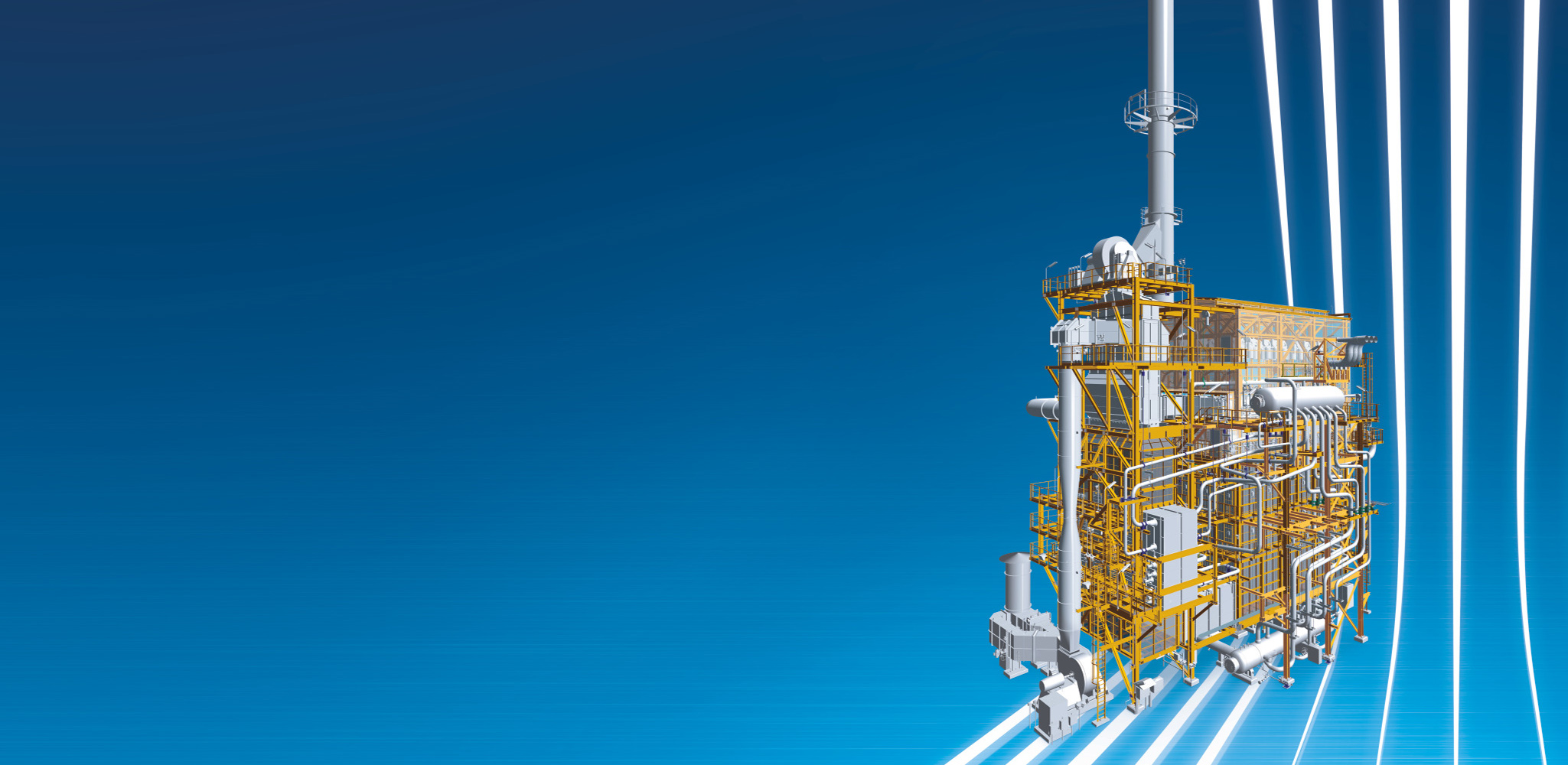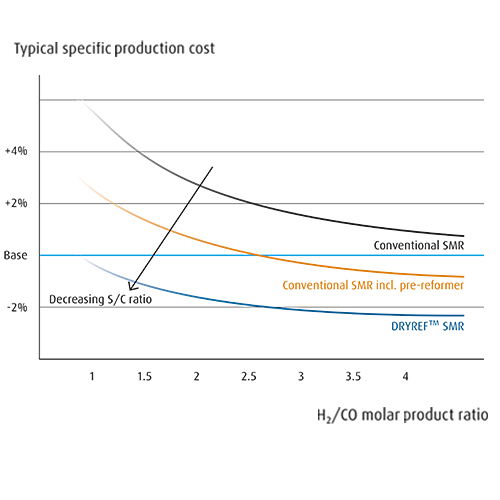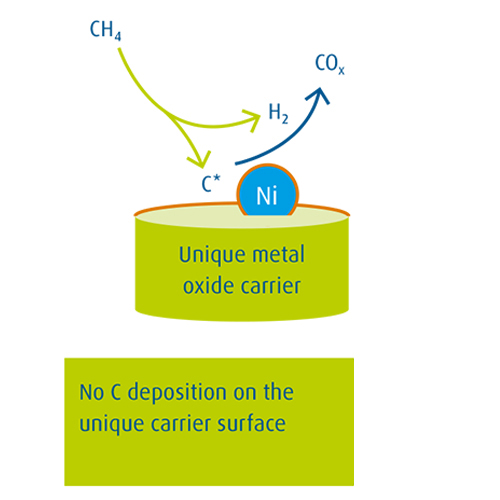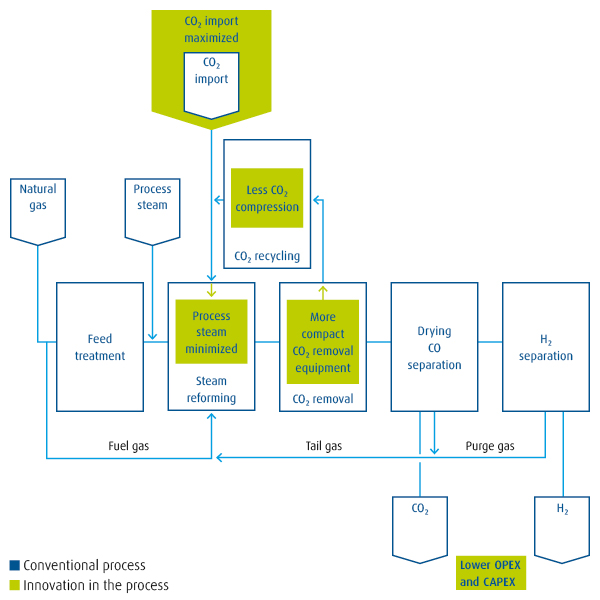Engineering


Smaller carbon footprint. Higher process efficiency.
Synergized benefits of Linde DRYREF™ and BASF SYNSPIRE™
- CO₂ utilization as feedstock
- Low OPEX – energy savings and lower costs
- CAPEX savings – more compact equipment

Doing more with less.
Linde’s DRYREF™ syngas generation plant – powered by BASF’s SYNSPIRE™ G1–110 catalyst – marks an important step in the move towards clean energy and climate mitigation. Not only does it give operators a chance to shrink their carbon footprint, it also improves process efficiency. Reforming plants fitted with DRYREF require a lot less steam.
These benefits make DRYREF technology an attractive and competitive alternative to partial oxidation plants with low hydrogen/carbon monoxide (H₂/CO) ratios.
As the chart illustrates, DRYREF technology significantly lowers the production costs of both conventional steam methane reforming (SMR) and SMR with a pre-reforming step (although these figures can vary slightly depending on utility costs).
Potential applications:
- All processes with a CO₂ source that require a H₂/CO ratio < 3
- Various processes in the chemical industry
- Downstream processes in oil and gas (refining)
Higher coking resistance. Lower catalyst deactivation.
DRYREF supports coke-free operation under conditions with a low steam-to-carbon (S/C) ratio.
In contrast to conventional reforming catalysts, the stabilized crystal structure and tuned catalyst composition of BASF’s SYNSPIRE G1–110 catalyst improves gasification activity (see illustration to the right). This prevents the formation of carbon “whiskers” and soft coke at weak points – which otherwise lead to catalyst deactivation.
The unique structure of BASF’s SYNSPIRE™ G1–110 catalyst enables coking resistance in low S/C conditions.
Self-cleaning mechanism:
- Unique structure and composition of metal oxide carrier
- No accumulation of C on catalyst surface
- No deactivation in dryer conditions


Lower carbon emissions. Wider syngas envelope.
By lowering the steam addition, DRYREF also reduces the surplus process steam flowing through the plant. This, combined with enhanced CO₂ import capabilities, enables the syngas composition to be adjusted over a wider envelope. The better thermodynamic equilibrium also results in less net CO₂ that needs to be removed. This, in turn, shrinks the CO₂ removal equipment footprint with less regeneration and recompression energy required. In addition, surplus CO₂ can be recycled, giving plant operators another option to improve their carbon balance. You can see some of the process steps in the flowchart to the left.
Improving carbon balance for footprint and cost savings:
- Utilization/recycling of CO₂
- Much lower S/C ratio
- OPEX and CAPEX gains
The benefits of DRYREF™ technology can also be leveraged by replacing catalysts in existing steam reformers with the SYNSPIRE™ G1–110 catalyst.
Immerse yourself in DRYREF technology: Sign up to access our e-learning session.
Synergized benefits of Linde and BASF
The alliance between Linde and BASF bundles Linde’s capabilities in the engineering business with BASF’s leading role in the development of high-performance catalysts.
Your partner for the production and processing of gases
Linde has been developing and optimizing gas processing, separation and liquefaction technologies for 140 years. Across the globe, we have delivered more than 4,000 plants and cover every step in the design, project management and construction of turnkey process plants offering maximum capital efficiency.
World’s leading supplier of environmental and process catalysts
BASF catalyst offers exceptional expertise in the development of technologies that protect the air we breathe, produce the fuels that power our world and ensure efficient production of a wide variety of chemicals, plastics and other products including advanced battery materials.



